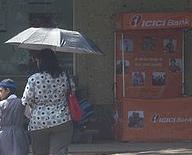 Tata Motors reported PAT of Rs7.3 bn versus our estimate of Rs5.1 bn, with the upside largely driven by a higher profit on sale of investments. At an operating level, results were in line with expectations with EBITDA of Rs10.5 bn compared to our expectation of Rs10.4 bn. Higher than expected realizations resulted in revenues of Rs79.8 bn beating our Rs78.2 bn estimate. 2QFY10 EBITDA margin at 13.2% grew 520 bps yoy largely on account of price increases, higher volumes (+12.3% yoy) and lower raw material costs led by a yoy decline in commodity prices. Adjusted PAT (excluding gains from investment income) of Rs3.7 bn marginally ahead of our expectation of Rs3.6 bn.
Tata Motors reported PAT of Rs7.3 bn versus our estimate of Rs5.1 bn, with the upside largely driven by a higher profit on sale of investments. At an operating level, results were in line with expectations with EBITDA of Rs10.5 bn compared to our expectation of Rs10.4 bn. Higher than expected realizations resulted in revenues of Rs79.8 bn beating our Rs78.2 bn estimate. 2QFY10 EBITDA margin at 13.2% grew 520 bps yoy largely on account of price increases, higher volumes (+12.3% yoy) and lower raw material costs led by a yoy decline in commodity prices. Adjusted PAT (excluding gains from investment income) of Rs3.7 bn marginally ahead of our expectation of Rs3.6 bn.
The LCV portfolio, comprising the Ace and its variants, is now one of its most (more…)
